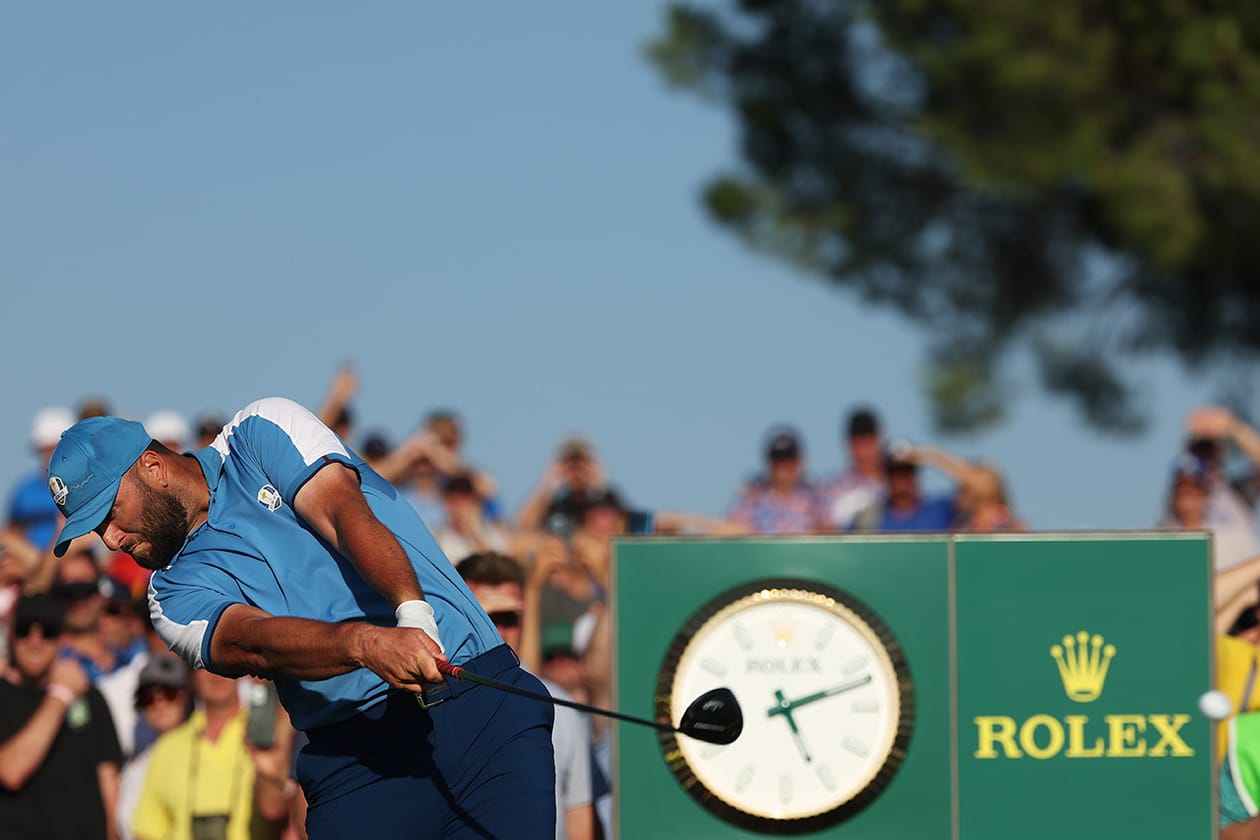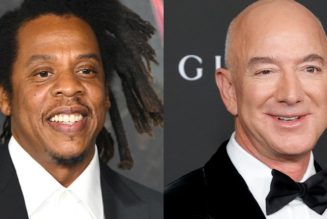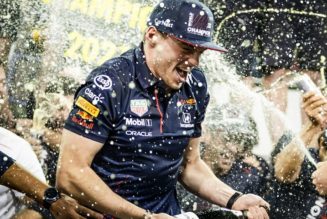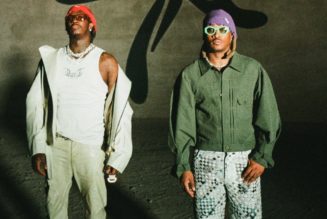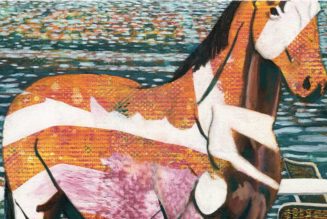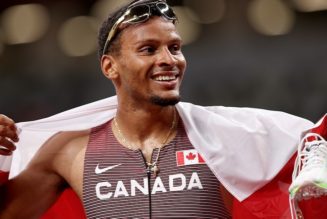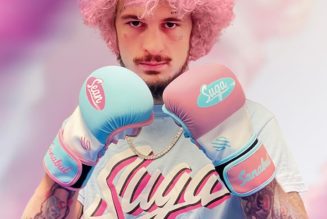The Ryder Cup doesn’t need anything extra to feel special. It doesn’t need to be held in a city where competitive sport has been practiced for thousands of years. It doesn’t need a golf course where an ancient castle overlooks the 1st tee, nor does it need a meme that prompted people to wonder how often they think about the Roman Empire. It just so happens that all of those things surrounded the tournament this year.
2023 was the year that Succession concluded and sprezzatura became everyone’s new favorite scrabble word. It was the year that Instagram feeds became flooded with fit checks in coastal Italian towns. And at the end of it, the Ryder Cup landed in Rome.
It was a tournament that ultimately pleased the home fans, as the Europeans, captained by Luke Donald, raced out to a big lead on the first day, and a comeback on Sunday from the Americans, captained by Zach Johnson, was too little too late. There’s a spirit of camaraderie and teamwork that transcends the tournament though, a dynamic that’s unique to golf whereby players who typically work alone are asked to represent something bigger than themselves, and the majority of fans taking in the action are pulling in one direction. All of this results in a sporting atmosphere that enthralls hardcore golf fans, festival goers, football fanatics, VIPs and fashion enthusiasts alike.
Hypebeast was given a unique opportunity to see the tournament up close and personal this year, and along the way, we got a chance to sit down with Ryder Cup Director and European Tour Group CCO Guy Kinnings to find out how the competition is looking to attract, and retain, the fan of the next generation.
The Sport of Quiet Luxury
At the end of a year when the phrase quiet luxury became one of Google’s favorite keywords, golf collectively said hold my Peroni. Historic clubs like Los Angeles Country Club, Augusta National, Fishers Island and Seminole have long been havens for wealth, both stealthy and ostentatious. From an apparel point of view, while your average pro golf tournament is an index of brands with sportswear DNA that emphasize the performance benefits of their products, the ones that show up at the Ryder Cup are decidedly lifestyle focused. It’s a recognition that the tournament’s audience is less interested in golf as a competitive pursuit, and more as a passion to be explored alongside others.
As has been the case for the last few Ryder Cups now, Team Europe arrived clad in hyper-luxury brand Loro Piana’s wool-infused polos and pants that cost somewhere in the region of $1000 USD. So as the summer of Succession and Europe-core style wrapped up, it felt particularly poignant to see Kendall Roy’s favorite Italian label create a satisfying intersection between golf and high fashion, especially in a golf season that crescendoed in Italy.
“With the Ryder Cup, having brands like Rolex, Loro Piana and
The Americans, meanwhile, were outfitted in their now familiar preppy uniform of Ralph Lauren’s rugby stripes and monochromatic shirts and bottoms pairs accented with contemporary branding. Had it not been for the scorching Roman heat, we might’ve seen cable knit cricket sweaters too. At a tournament that has at times been defined by its questionable fashion choices (picture frame polos and water absorbent rain gear included), it’s hard to have any qualms with how either team presents itself these days.
Another unique component to the Ryder Cup is the pre-tournament festivities, which include formal galas and an opening ceremony where the players are accompanied by their partners, a rare opportunity where we get to see guys like Jon Rahm, Justin Thomas, Luke Donald and Zach Johnson dressed in something other than golf or activewear. The suiting and dressing for these events was taken care of by the same two brands, while many of the players, including both captains, accented their looks with Rolex watches.
Although golf is increasingly embracing streetwear to attract younger audiences, there’s a new opportunity to combine that approachable aesthetic with luxury touches, thereby breaking up the status quo. It’s representative of a macro blueprint for how golf can continue to grow while remaining true to its roots. We spoke to Chris Collick before the tournament, the Head of Content and Marketing for golf retail site TRENDYGOLF, who oversaw many of the collections that arrived before the tournament. “The way golf’s going at the moment, there’s a lot of alternative golf wear,” he said. “Whereas with the Ryder Cup, having brands like Rolex, Loro Piana and Ralph Lauren shows that golf still has that heritage and touch of class to it even while it’s transitioning.”
Those alternative wares he refers to manifested in drops from Montreal-based Forden Golf, who dubbed their collection Ryde or Die, and trendy LA label Metalwood, who linked up with the US team’s official off-course shoe provider Del Toro. SOLO Golf, meanwhile, focused on the host course Marco Simone with graphic tees. Naturally, Nike led the way when it came to on-course footwear, remixing the streetwear staple Air Max 1 G with USA and Europe colors, as well as providing both teams with PE’s for the week.
The Timekeepers of Golf
Having the intention to reach new fans is one thing, but it’s another to come up with a commercial strategy that enables it. Up until 2021, the rights for the Ryder Cup were sold separately by the PGA of America and the European Tour, who take turns organizing the event biennially. But after Paris 2018, the two organizations combined into one entity, giving far more value to potential partners than ever before. One of those partners is Rolex, who first signed up as a supporter of the European team in 1995, and expanded its relationship in 2021 to become a Worldwide Partner of the tournament.
Rolex’s support of golf runs deep, beginning in 1967 when it signed the legendary Arnold Palmer as its first Testimonee, a figure who transcended golf to become a cultural icon. Palmer was then joined by Jack Nicklaus, a man who needs no introduction, and international star Gary Player, forming what would become known as the Big Three. In the 50 years since, the brand helped oversee the commercialization and expansion of golf as it reached new audiences through TV. In this day and age where new brands are constantly trying to latch onto golf’s sudden popularity among the 18-35 age group, it’s refreshing to know some have been with golf from the start.
It’s interesting to consider what has made the Ryder Cup and Rolex such a natural partnership though. There’s no golfer in history that embodied sprezzaturra quite like Arnold Palmer, who people often use as their proverbial “Roman Empire” of golf fashion. And beyond fashion, there’s a certain elegance and precision to golf that makes it satisfying to see Jon Rahm’s perfectly coordinated motion framed by the iconic green and gold Rolex clock. The Ryder Cup lives right alongside the four majors as one of the biggest events in golf, but it has a relevance that reaches far beyond the fairways.
For Kinnings, the key to growing the Ryder Cup, and golf as a whole, is finding ways to attract new fans while maintaining the heritage DNA of the game. “There will always be luxury in the game and I think golf does work in that space really well,” he said. “But I think there’s also a slight sense that it can appeal in a way that isn’t purely about that sort of aspirational luxury … people are consuming golf in a different way. They’re not just playing 18 holes at a club, they’re going to Topgolf, they’re going to hit balls on the range. There’s still that aspirational element, but it’s more personal aspiration: ‘How do I get better?.’”
“We didn’t need to sell tickets, they’ll sell out, but taking the Ryder Cup and the sport to a different audience has got to be a good thing.” – Guy Kinnings, Ryder Cup Director
For the Fans
The Ryder Cup organizers are clearly paying attention to the shifting focus in golf towards celebrities and tastemakers, and for the 2023 edition they lined up none other than the sport’s biggest hype man, DJ Khaled, to bring the biennial competition to his 37 million Instagram followers. The news was first announced back in June, and resulted in Khaled posting numerous times in the lead up to the tournament.
Naturally, we had to ask Kinnings about how this unexpected partnership came about: “With this event, you can do so much; you can bring in food, you can bring in music. We didn’t need to sell tickets, they’ll sell out, but taking the Ryder Cup and the sport to a different audience has got to be a good thing. Let’s be honest, golf has had a preconception, and events like this and someone like DJ Khaled, they change that and make people go, ‘Oh, maybe it’s not all old blokes in bad jumpers.’”
Similarly, for the first time in its history the Ryder Cup hosted its own mini celebrity golf tournament. The All-Star Match was played two days before the start of the tournament, and featured internationally recognized stars Novak Djokovic, Super Bowl Champion Victor Cruz, F1 driver Carlos Sainz and actress Kathryn Newton, assisted by past Ryder Cup captains Colin Montgomerie and Corey Pavin. Although Djokovic is a globally revered athlete, he’s still very new to golf, and the nerves he felt having his nascent swing examined by tens of thousands of people would likely be shared by anyone.
“Golf has suddenly become the thing you do when you stop playing football or you’re a Hollywood actress – it’s great that they love the game and that really helps us,” said Kinnings. “People who are influencing like that get people to play the game in a different way.”
But did all of these efforts actually succeed in attracting new fans? Kinnings noted that 70% of the fans were coming to the Ryder Cup for the first time, and 49% of ticket holders were under the age of 40. Going forward though, the question is how do the organizers convert these people into lifetime viewers? A large portion of Ryder Cup attendees may be more experienced attending football matches and music festivals, and to continue attracting not just golf enthusiasts, but event seekers, the organizers recognize they’re being measured against elite company. In that context, it’s crucial that fans onsite leave with a positive experience, and the Ryder Cup was one of the most well run events all year.
In contrast to the US Open where ticket sales were curtailed due to constraints at the host venue LACC, droves of fans came out to Marco Simone, 45,000 a day in fact, and yet it never felt overcrowded. That’s because the venue was renovated prior to the tournament specifically with fan experience in mind.
The rolling nature of the property created natural viewing points for fans to view multiple holes, which were noted on signage with binocular symbols. Water refill stations were positioned throughout the property, especially important with temperatures rising into the 80s each day. Attendees roamed around with phone charging stations, massive big screens allowed fans to keep up with the action from almost anywhere on the course and free WiFi hotspots kept people connected with their friends online. Even the traffic getting to and from the course, which was feared to become an issue, was surprisingly free flowing. It was truly a masterclass in event planning.
As far as attracting new fans goes, there’s an X-Factor that’s been in play for the last two European tournaments now, and that’s location. Although the competition will always be the main draw of the Ryder Cup, not enough can be said about the impact of hosting a tournament in Rome, or Paris, where it was staged in 2018.
Kinnings remarks again: “At the end, what everyone really cares about is what goes on inside the ropes – was it a great match? But if someone can come and say they watched some fabulous golf … and they got to go and see the Pantheon and around the Vatican; I suspect, as people were going to buy the tickets, they were going, ‘Look what we can do together.’”
The potential to combine a golf trip with history, art, music and fashion creates an appeal that reaches far beyond the traditional golf crowd. And although that won’t be possible every year (the next European stop is in the Irish countryside), 2025 is set to take place just outside New York City, creating the perfect opportunity to build on the golf-meets-culture formula. Over to you, Bethpage.



